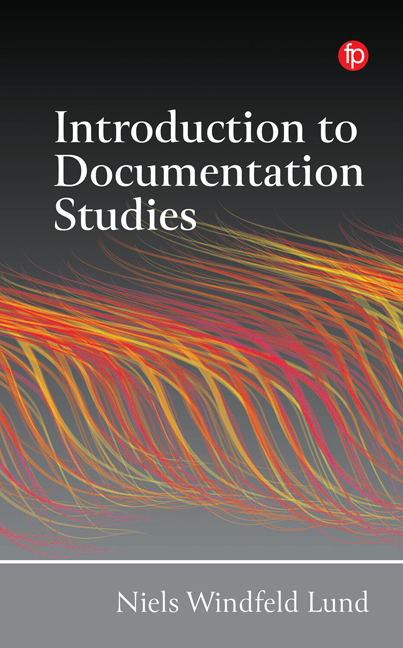 Introduction to Documentation Studies
Introduction to Documentation Studies 9 - Identity Documentation: Name and Number
Published online by Cambridge University Press: 28 March 2024
Summary
Introduction
When Mozart documented his skills as a composer by composing the Requiem, he documented his identity as composer. In similar ways Ernest Hemingway, Edvard Munch, Thorkild Kjærgaard, and the many thousands of marchers documented their respective identities as writer, painter, scientist, and political activists, representing as well as relating them to different subsystems, different worlds: the classical music world, the literary world, the visual arts world, the scientific world, and the political world.
In the modern world we are all involved in different subsystems, but each one of us is also a part of two of the world’s oldest subsystems: the family-kinship subsystem and the national-state subsystem. These two subsystems also provide us with the most fundamental identities in life: our family and citizenship. To document that we belong to a family and that we are citizens we have personal names and passports or other kinds of identity certificate.
We document our identity as persons with our personal name; our personal history with a date of birth and a life story. Our personal name also documents our relationship to our parents and family. My full name is Niels Jorn Windfeld Lund. My parents decided to give me that name when I was baptized in 1949. My first name, Niels, was probably chosen by my parents because it was frequently used in Denmark in the late 1940s and early 1950s, but Jørn refers to my father, whose name was Jørn Windfeld Lund, and thus documents my relation to my father. Windfeld refers to my paternal grandmother, Ellen Windfeld, who came from an old and large family by the name of Windfeld which can be traced back to the early 17th century. My grandmother Ellen Windfeld married my grandfather Simon Kerstens Andersen Lund who came from a peasant family without a family name but that came from a small place in Denmark called Forumlund, which place name provided an ancestor with the last name Lund. In this way my father’s last name documented both his mother’s and his father’s family.
When I was named, I could have had my mother’s maiden name, Kjeldbjerg, as a middle name and my father’s name, Windfeld Lund, as my last name, resulting in Niels Jørn Kjeldbjerg Windfeld Lund or Niels Jørn Kjeldbjerg Lund.
- Type
- Chapter
- Information
- Introduction to Documentation StudiesComplementary Studies of Documentation, Communication and Information, pp. 119 - 126Publisher: FacetPrint publication year: 2024
